This is the third iteration of the Asus ROG Flow X13. This time, Asus has come so close to absolutely nailing it, it almost hurts. The basic premise of a super-sleek 13-inch 2-in-1 laptop with a touch of gaming grunt remains. But this time Asus has upped the ante not just with the latest silicon from AMD and Nvidia, but higher spec chips that you would have thought possible.
By way of example, the OG ROG Flow X13 from 2021 ran an Nvidia RTX 3050 Ti GPU at best. For the latest Asus ROG Flow X13 2023 variant, you can opt for up to an RTX 4070. That's a pretty huge upgrade.
Admittedly, it comes with the major caveat that power to the 4070 is limited to just 60W as a consequence of the Flow X13's compact proportions. But still, up to a 4070? Remarkable. Our review sample is fitted with an RTX 4060 and is likewise limited to 60W. It's paired with no less a CPU than the AMD Ryzen 9 7940HS, all eight cores and 16 threads.
We're talking about some fairly serious hardware, then, crammed into this laptop's lithe shell. To the two main chips you can add 16GB or DDR5 memory (32GB is available optionally), plus a 1TB M.2 SSD.

CPU: AMD Ryzen 9 7940HS (8-core)
Graphics: Nvidia RTX 4060 8GB
RAM: 16GB DDR5
Screen: 13.4-inch, 2560 x 1600 (IPS, 165Hz, 3ms, 100% DCI-P3)
Storage: 1TB SSD M.2 NVME
Ports: 1x USB4, 1x x USB-A, 1x HDMI, 1x microSD, 1x 3.5mm audio, 1x XG Mobile
Wireless: Wi-Fi 6E, Bluetooth 5.3
Camera: 1080p webcam
Weight: 2.87 lbs (1.3kg)
Dimensions: 29.9 x 21.2 x 1.87 cm (11.77 x 8.35 x 0.74 inches)
Price: $1,599 | £1,699
Then there's the 13.4-inch 16:10 display. It's an IPS-type LCD panel, and therefore not OLED. But the 2,560 by 1,600 native resolution, 165Hz refresh and 500 nits bode awfully well. In short, you're making very few compromises, on paper, for the form factor and all at a remarkably reasonable price of $1,599 or £1,699 as configured here.
Speaking of form factors, the Asus ROG Flow X13's physical bearing is perhaps its greatest appeal. This thing is gorgeous. Okay, it's not the skinniest 13-inch laptop on the planet, but it is pretty slim and certainly very slick.
The chassis itself is largely hewn from lush alloy and impressively rigid. The keyboard suffers from pretty much no bounce or flex, which really helps to give that premium, well-engineered feel. The textured finish to the keyboard and screen covers also feel great in the hand. This laptop simply feels special.
The 360-degree hinge that allows the X13 to fold right round into tablet mode is well executed, too, thanks to a sturdy feel and just the right amount of stiction. Though, arguably, this laptop still doesn't make a really great tablet. It's a little too bulky for that, despite pretty thin screen bezels that help to minimise the chassis width and depth.
But Asus has implemented the 2-in-1 format with so few downsides, you can take it as a nice but likely occasional use extra.
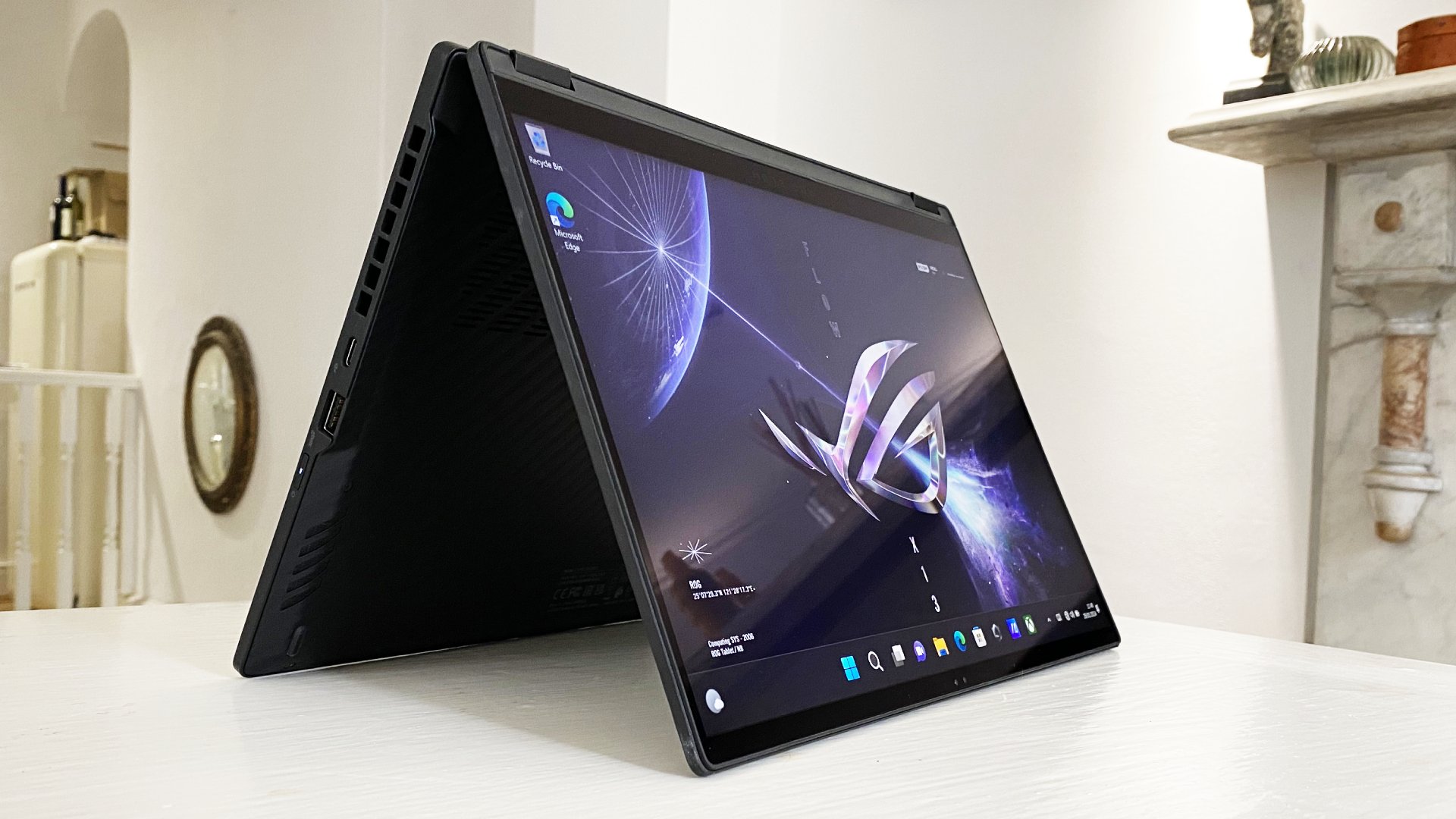
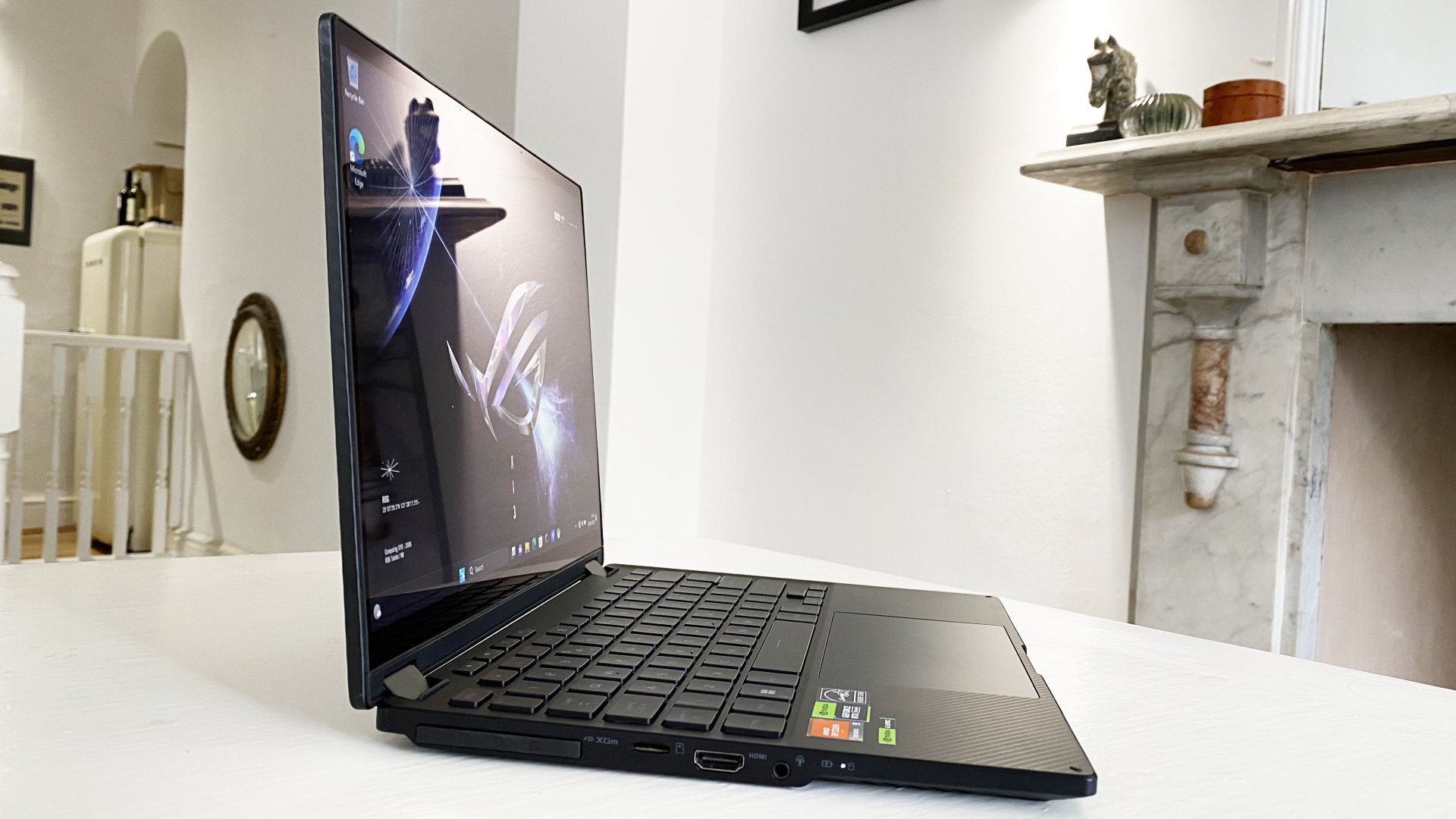
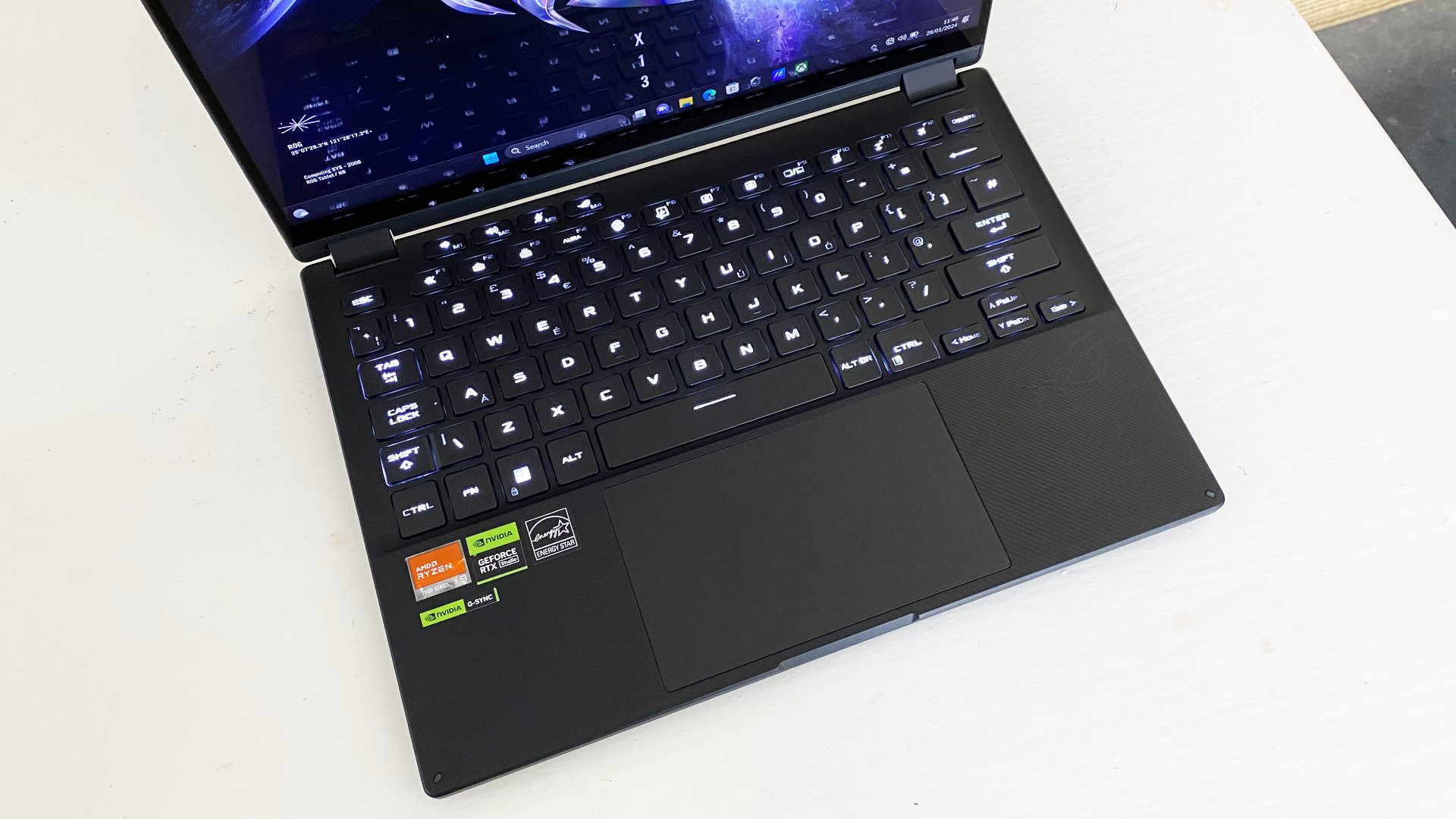

If there is a downside to the sleek looks—aside from the aforementioned limited GPU wattage—you might expect it to be connectivity. But the Asus ROG Flow X13 (2023) has just enough ports to keep most users happy. There's a Type-C USB4 port, which doubles as the power input, a full-sized HDMI socket, one USB-A, microSD, and a 3.5mm headphone jack. The X13 also has Asus's XG Mobile IO port. It's a sort of semi-bespoke interface that enables an external box with a more powerful GPU (up to an RTX 4090 mobile), plus another HDMI, DisplayPort, three USB-A ports and a Type-C socket.
It's a nice idea, but in practice the box configured with that RTX 4090 mobile GPU costs, wait for it, $1,999. Yes, really, more than the cost of the entire laptop. Meanwhile the XG Mobile IO port on the side of the X13's chassis contains an additional USB-C socket, which is handy. But the whole thing is covered by a slightly fiddly flap, which is less handy. In the end, the XG Mobile IO port is probably a bit of an irrelevance and it would be preferable to just have the extra USB-C more easily accessible.
So, this is a super nice machine physically with a surprisingly powerful on-paper spec. How does it actually perform? Expectations for gaming need to be kept somewhat in check, because the main problem is that 60W power limitation for the RTX 4060 mobile GPU.
The immediate consequence is low clock speeds. Nvidia says that the RTX 4060 for laptops is available with a range of frequencies, starting at 1,470MHz and ranging up to 2,370MHz. Sure enough, the X13's 4060 GPU is capped at the very bottom of that scale.
Playable frame rates of around 60fps at 1080p in the latest games at ultra settings are still possible, provided you don't max out the ray-tracing. But you're getting clearly lower frame rates than some more purely gaming-focussed laptops with the 4060 which run the full 2,370Mhz spec, like the Razer Blade 14.
Of course, as an Nvidia RTX 40 GPU, you have access to the full suite of NVIDIA DLSS features including upscaling. That helps to push frame rates up enough at 1080p to begin to take advantage of the screen's 165Hz refresh, though even with DLSS upscaling, getting up around 165fps at the laptop's native 2,560 by 1,600 resolution is too big an ask. You can game a native resolution using DLSS, just not well into triple-figure frame rates.
Speaking of the screen, it's a gorgeous, razor sharp example of the IPS breed. It can't compete with an OLED display for contrast and black levels. The same goes for LCD panels with mini-LED backlights. But it's still a 500 nit panel with plenty of punch and fairly quick response times.
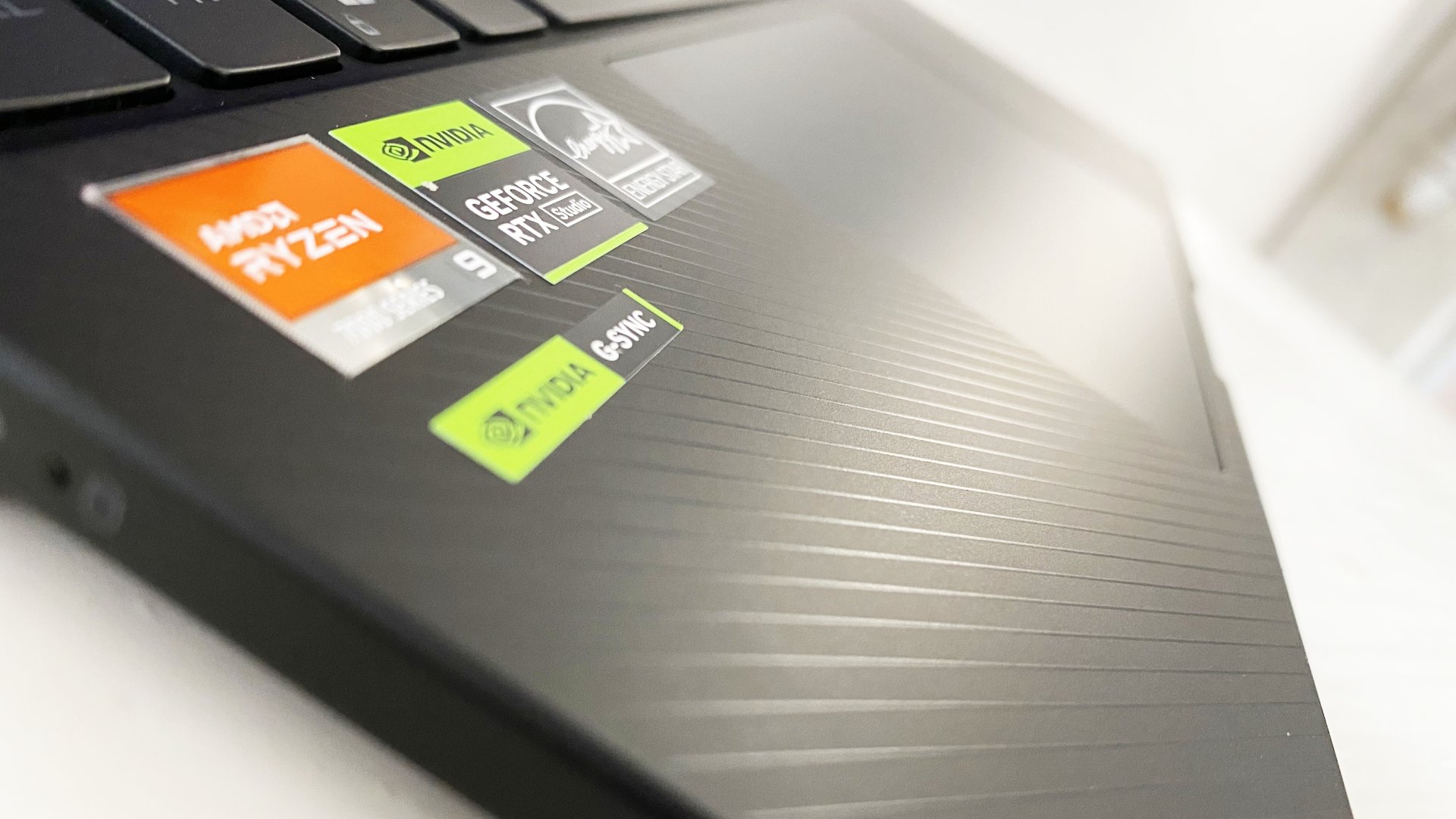
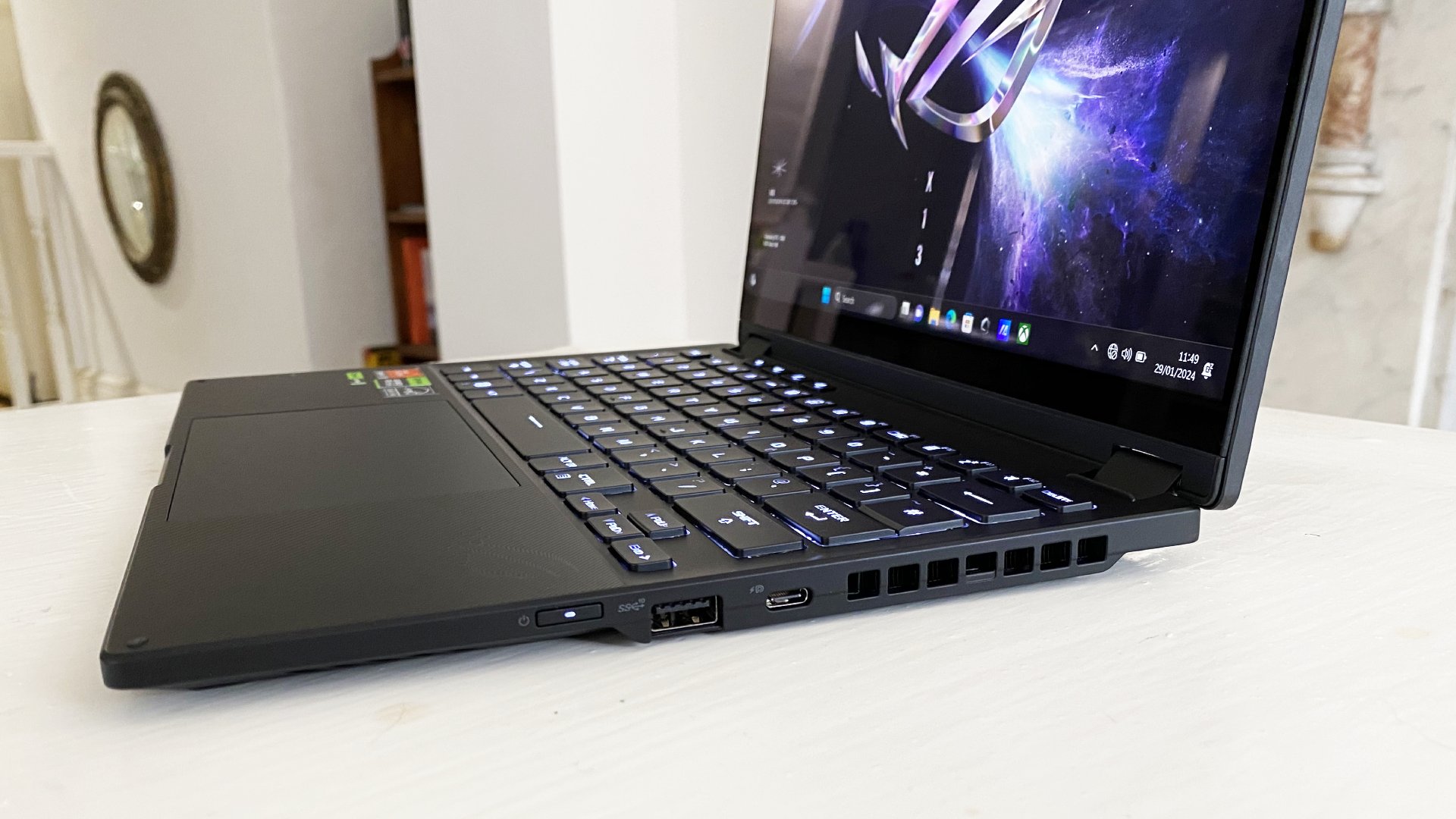
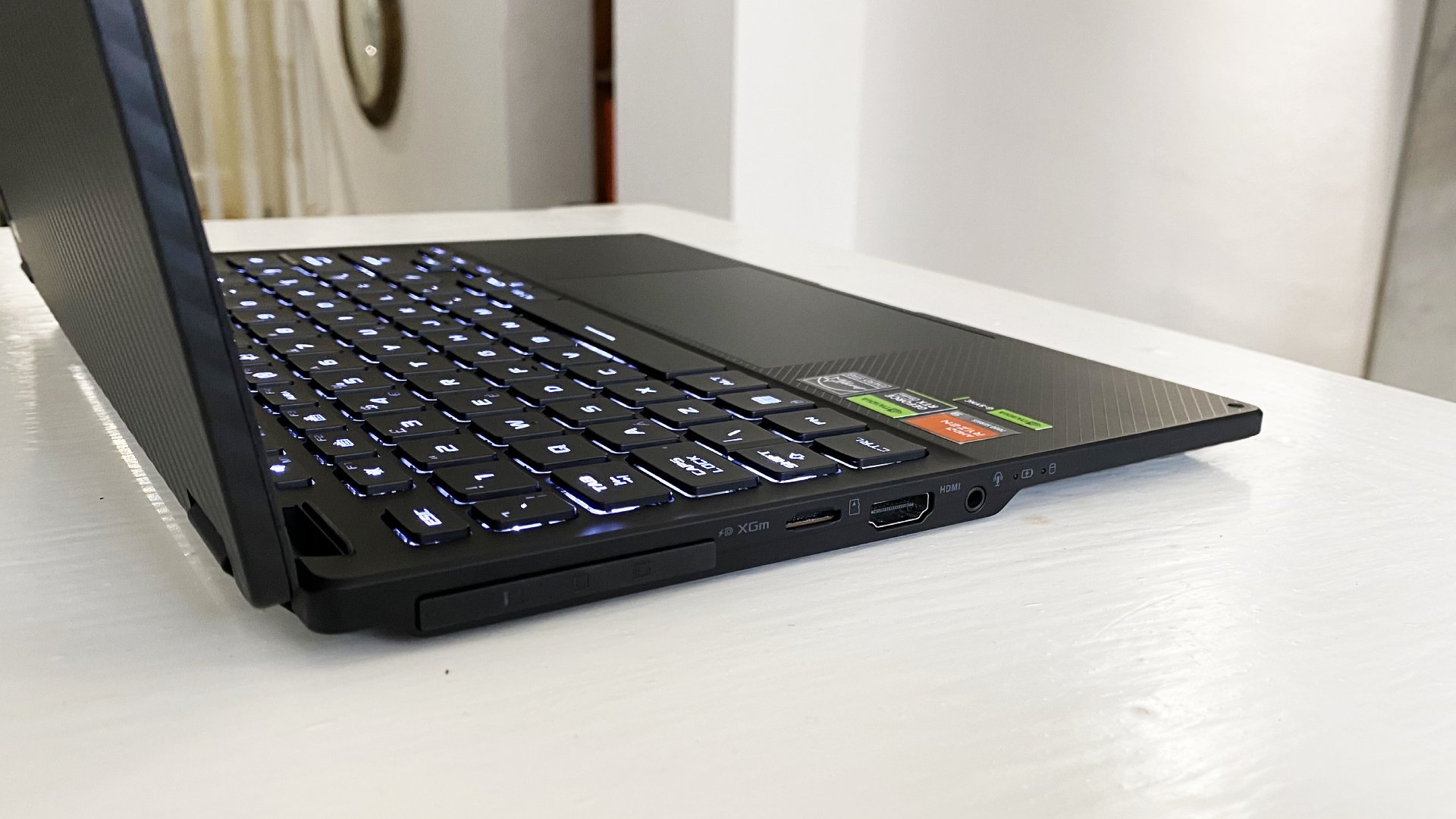



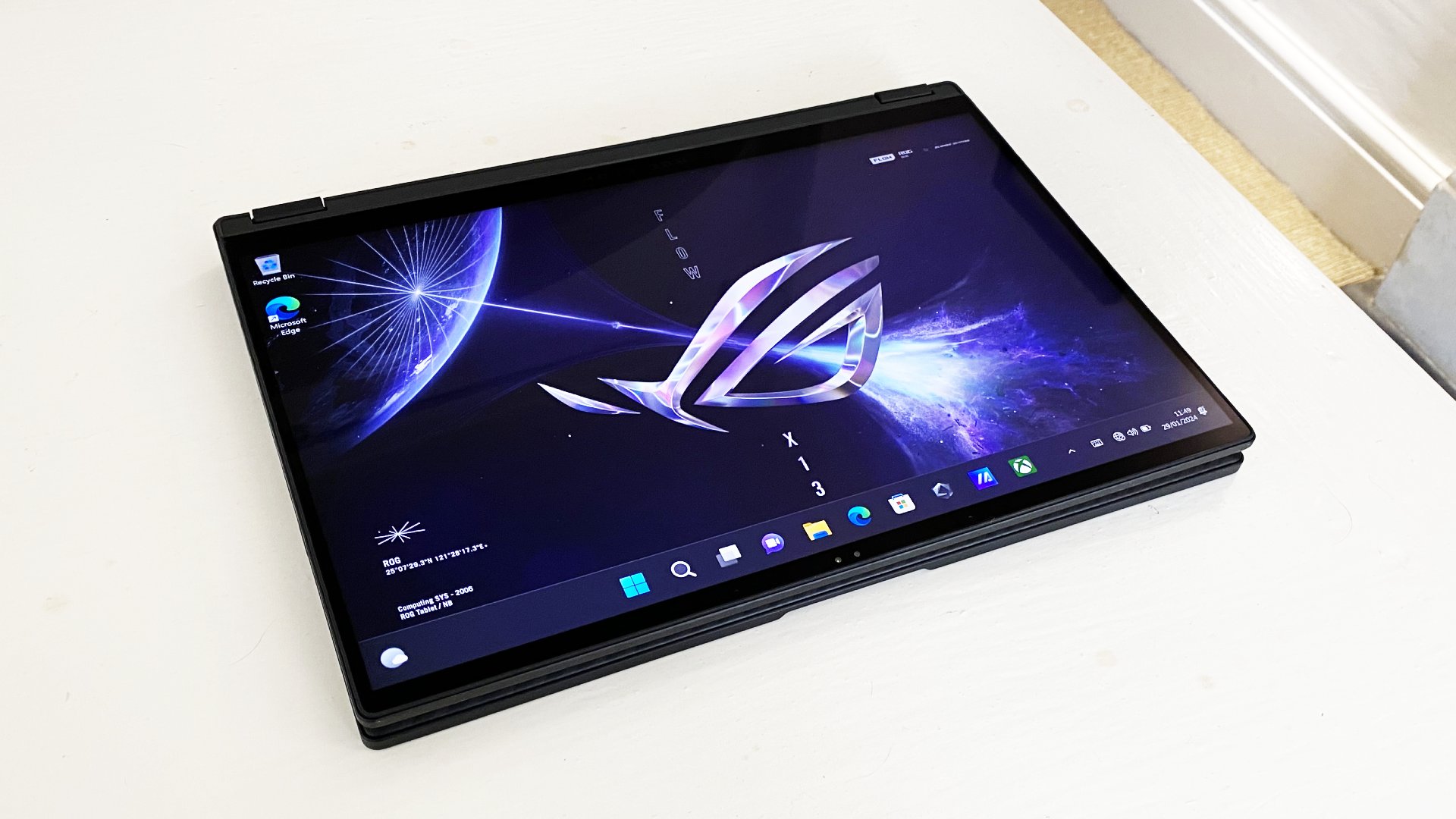
As for the rest of the system's performance, that eight-core AMD Ryzen 9 7940HS CPU is a bit of a monster and offers all the performance you could reasonably expect of an ultraportable laptop, and then some. Truly, you're getting desktop-class performance in a tiny 2-in-1 laptop. It's a bit bonkers. The 16GB of RAM and 1TB M.2 SSD are decent mid-range specs and you have the option to upgrade if you want 32GB of RAM or a bigger SSD.
✅ You want all-round versatility: The 2-in-1 form factor makes this an incredible all-rounder. The Flow X13 can do almost anything.
✅ You want true portability: This is a genuinely compact and light laptop but still has some genuine gaming performance.
❌ You want to maximise frame rates: The RTX 4060 GPU is limited to 60W, so this isn't a pure gaming laptop.
❌ You expect good battery life: Seven hours of video playback isn't terrible, but it's disappointing for this class of laptop.
If that all sounds pretty promising, there's a catch. Put simply, the battery life sucks. It's not totally catastrophic. But the Asus ROG Flow X13 gives up after just short of seven hours of video playback with the screen at half brightness. Do anything even remotely demanding and that time will tumble.
For a conventional gaming laptop, that would be expected. But a key usability metric for any ultraportable is longevity away from the mains and the Asus ROG Flow X13's limited battery life seriously compromises its appeal. If this thing did ten hours of video playback, and therefore at least five hours of proper uptime doing more demanding work, we'd be screaming buy, buy, buy. As it is we're asking, why, why, why?
All of that means that this is a truly fabulous laptop that has a huge amount to offer for a pretty fantastic price given the quality of engineering and the specs, but suffers one major flaw. It looks great, it's beautifully engineered, the performance is well beyond what you'd normally expect for this class of laptop and the 2-in-1 form factor with touchscreen functionality makes for an incredibly versatile package.
But that battery life is a real bummer. It doesn't totally ruin the Flow X13 but it turns what is otherwise one of the best all-round laptops out there into something slightly more difficult to recommend.






